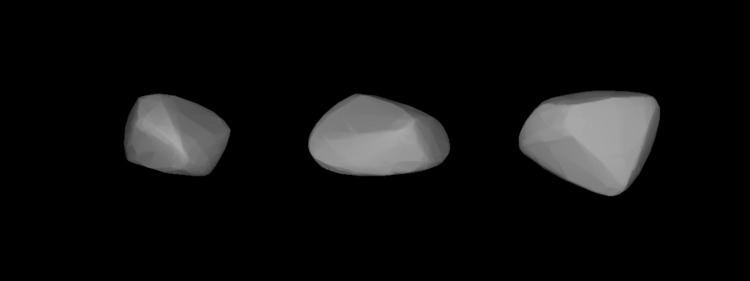Discovered by K. Reinmuth MPC designation 1635 Bohrmann Discovered 7 March 1924 Discoverer Karl Wilhelm Reinmuth Asteroid group Asteroid belt | Discovery date 7 March 1924 Orbits Sun | |
 | ||
Alternative names 1924 QW · 1931 VH11936 UJ · 1938 CH1939 HL · 1943 EG11948 EA1 · 1953 FH Discovery site Landessternwarte Heidelberg-Königstuhl Similar 1862 Apollo, Sun, 1419 Danzig, 1056 Azalea, 1111 Reinmuthia | ||
1635 Bohrmann, provisional designation 1924 QW, is a stony Koronian asteroid from the outer region of the asteroid belt, approximately 17 kilometers in diameter. It was discovered on 7 March 1924, by German astronomer Karl Reinmuth at Heidelberg Observatory in southern Germany.
The stony S-type asteroid belongs to the Koronis family, a group consisting of few hundred known bodies with nearly ecliptical orbits. It orbits the Sun at a distance of 2.7–3.0 AU once every 4 years and 10 months (1,760 days). Its orbit has an eccentricity of 0.06 and an inclination of 2° with respect to the ecliptic. As no precoveries were taken, Bohrmann's observation arc begins with the first used observation taken on the night following its discovery.
According to the surveys carried out by the Japanese Akari satellite and NASA's Wide-field Infrared Survey Explorer with its subsequent NEOWISE mission, Bohrmann measures between 16.6 and 19.1 kilometers in diameter, and its surface has an albedo between 0.187 and 0.255. The Collaborative Asteroid Lightcurve Link assumes a standard albedo for members of the Koronian family of 0.24, and calculates a diameter of 17.1 kilometers, based on an absolute magnitude of 11.0.
In September and October 2003, four rotational light-curves were obtained for this asteroid from photometric observations at several observatories around the world, including the Whitin Observatory in Wellesley, Massachusetts, as well as by U.S. astronomers Robert D. Stephens and Brian D. Warner. The light-curves gave two different solutions for the Bohrmann's rotation period. One solution gave 7000586400000000000♠5.864±0.001 and 7000586427000000000♠5.86427±0.00005 hours, while the alternative solution gave 7001117300000000000♠11.73±0.01 and 7001117300000000000♠11.730±0.005 hours. The light-curves had a concurring brightness variation of 0.25 in magnitude (U=2/2/3/n.a.).
The minor planet was named after German astronomer Alfred Bohrmann (1904–2000), a long-time observer of minor planets at the discovering Heidelberg Observatory and a discoverer of minor planets himself. During his career he had published several hundreds of precise observations of asteroids. Naming citation was published before November 1977 (M.P.C. 3931).
